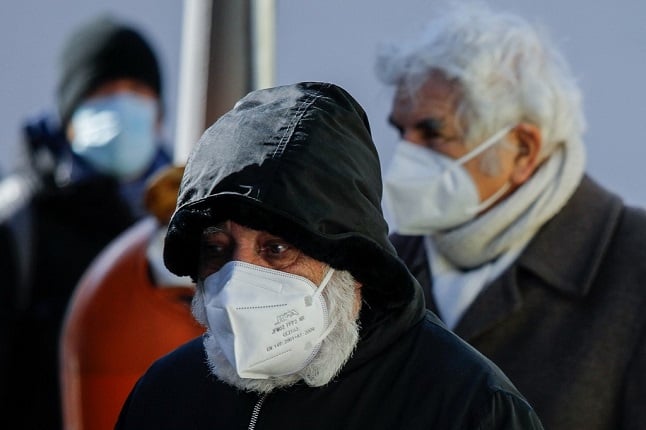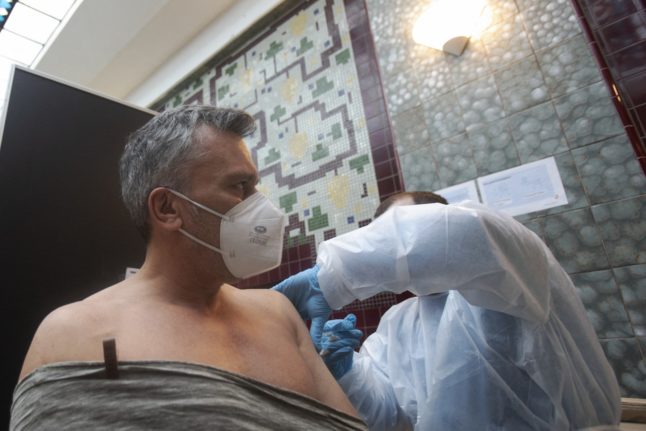Where do I need to show proof of 3G?
Proof of 2G (full vaccination or recovery) is required for customers and visitors in several areas:
- Gastronomy (ie. restaurants, cafes, bars, whether indoor or outdoor, although employees can still use a test option)
- Hotels
- Services requiring close physical contact like hairdressers and beauty salons
- Cinemas and theatres
- Events for over 25 people, whether seated or standing
- Visiting hospitals or care facilities (except for accompanying a childbirth, or visiting palliative or hospice care, where you can wear an FFP2 mask as an alternative to 2G)
For workplaces, where a 3G rule was recently introduced, PCR tests are still valid for entry.
Who needs to show proof of 2G?
The 2G rule applies from the age of 12, and children aged between 12 and 15 can continue to use tests and will be allowed entry, for example using the Ninja Pass which shows school tests. Vienna has stricter rules, with 2.5G applying from 12 to 15 (only negative PCR tests are accepted).
There are no other exemptions, except for people who for medical reasons have been advised against vaccination by a doctor.
This means that unvaccinated people will not be able to enter these areas. However, there is a four-week transition period for the introduction of this 2G rule, during which a negative PCR test in combination with proof of a first dose of a Covid-19 vaccine will be sufficient. This will be in effect until December 6th.
How is 2G enforced?
Businesses are responsible for checking your proof of 2G when you arrive, often using the Green Check app which they can use to scan your QR code.
There are also an additional 800 police officers being brought in to join the 4,000 already working on checks of 2G.
Individuals who break the rules face fines of up to €500, while for businesses violation can lead to a €30,000 fine.
Where are FFP2 masks required?
- Cultural venues like libraries and museums
- Cable cars
- All retail venues
- Public transport, and for customers in supermarkets and pharmacies (this is already the case)
In these venues, proof of 2G or 3G is not required.
How do I show my 2G proof?
To meet the 2G criteria, you will need proof of either two doses of an EMA-approved vaccine (Moderna, Pfizer or AstraZeneca — one dose of Johnson & Johnson will be considered as 2G until January) with the second dose no older than 270 days, or proof of recovery from Covid-19 within the last 180 days.
The validity of Austria’s Green Pass, the app used to show proof of vaccination, has also changed. People are now only considered fully vaccinated for nine months after their second dose of a Covid-19 vaccine. The aim of this is to encourage take-up of the third dose, which is available to everyone from six months after their second dose.
And all exit checks — requirements to show proof of 3G in order to leave certain high-incidence municipalities — have been removed.
Why the change?
“The situation in Austria is serious, as in a number of other European countries. The dynamism is extraordinary and occupancy rates in the intensive care beds are increasing significantly faster than expected,” said Chancellor Alexander Schallenberg.
Both the rate of new Covid-19 cases (incidence rate) and the number of Covid patients requiring intensive care have risen sharply over the past week. On Friday, the Health Ministry reported 9,388 new cases in the previous 24 hours, not far off the all-time high and up from 5,861 last Friday — a 60 percent rise week-on-week.
This is combined with a low rate of vaccine take-up, meaning more people are at high risk of catching, spreading, and falling seriously ill with the virus.
The newly tightened measures are aimed at reducing the spread of the virus, ensuring that the healthcare sector can cope, and encouraging vaccination to increase protection long-term.
“In a car you put on your seatbelt [to protect yourself]. Vaccination is the seatbelt in the pandemic,” was how Schallenberg put it in the Friday evening press conference announcing the measures.
Several regions had already chosen to tighten their rules beyond the national measures, most notably Vienna which had already announced a 2G rule from November 8th before Friday’s meeting between the government and regions.
One of the criticisms of Austria’s response has been that the frequent changes and regional variation in restrictions are confusing to follow, so the latest regulation creates standardisation across the nine regions.
How does this fit in with the five-step plan?
It’s only a week since Austria last updated its staggered plan for Covid restrictions, introducing two extra stages to create a five-step plan.
Each stage was linked to a different level of ICU capacity being reached. This time last week, Austria was still in the first stage out of five, with around ten percent of intensive care beds occupied by Covid-19 patients.
But last week it became clear that Austria would be entering the next stage as the number of Covid patients in ICUs approached 300, and this week the number climbed even more rapidly.
The changes mean that the country is entering level 4, which was only added to the plan last week.
The next and final stage, level 5, would be a lockdown for unvaccinated people, who would only be permitted to leave their homes in certain circumstances. Under current rules, this last level is set to be introduced if the ICU occupancy rate exceeds 600 ICU beds (or 30 per cent occupancy).



 Please whitelist us to continue reading.
Please whitelist us to continue reading.
Member comments